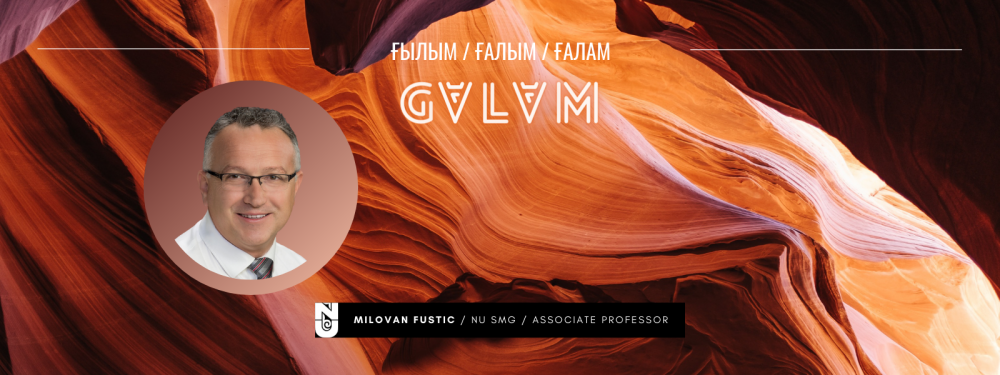Galym-Galam: Associate Professor Milovan Fustic NU SMG
Our new guest of ‘Galym-Galam’ rubric is Milovan Fustic, Associate Professor of NU SMG. According to Dr. Fustic’s research, Chu-Sarisu, Mangyshlak, and Zaysan basins provide a foundation for Kazakhstan to become a global leader in sustainable energy development. The Associate Professor tells about opportunities to increase the production efficiency from petroleum and uranium hosting sedimentary rocks.
Could you please tell us about your educational and professional background?
I hold a Diploma (MSc eq.) from the University of Belgrade (Yugoslavia / Serbia) and a Ph.D. in Petroleum Geology from the University of Calgary (Canada). I have more than 20 years of experience in industry and academia. The industry experience includes work on multi-billion dollar SHELL, Nexen, and Statoil start-ups. Throughout my career, I was privileged to work with great teams and people on various academic and applied science questions.
Could you please tell us about your current research project?
Kazakhstan is facing two major challenges:
1) the current oil production is among the most expensive in the world, averaging about 46 USD/barrel for onshore and about 51 USD / barrel offshore;
2) the country ranks among the 20 largest emitters of greenhouse gasses (GHG) per capita.
Advanced geoscience solutions are needed to resolve these big problems. Thus, I am appraising the sedimentary basins of Kazakhstan for sustainable energy solutions. That includes decarbonization initiatives such as carbon storage and geothermal energy production. Additionally, with my team, I am developing sedimentological and geochemical tools and criteria for increasing the production efficiency from petroleum and uranium hosting sedimentary rocks. Kazakhstan’s sedimentary basins provide a foundation for the nation to become a global leader in sustainable energy development.
Our research achievements are available here.
What are your key research findings?
The team and I have made numerous scientific observations and findings related to the origin and nature of organic-rich strata which allowed us to deepen our knowledge about the Earth’s past as well as to conceptualize new petroleum systems and mineralization concepts. Identification of world-class unconventional shale resources and sweet spots for geothermal developments coupled with advancements in understanding geological controls on recovery methods have significant practical industrial and societal implications.
Why did you choose to join NU?
I have joined NU SMG in 2019. SMG is the youngest school at NU and I like start-up opportunities. The main drive to join NU SMG was a recognized opportunity of being part of an exciting and truly impactful start-up. During my interview, I was also impressed with the existing team, staff, equipment, and school’s ambitions.
What are your future plans?
There are many opportunities. On the education side, I really would like to launch the graduate program in Geosciences. The program start-up is currently on hold due to pandemics. Many people are supportive and I am positive that together we will succeed. The program is designed to provide enormous opportunities for our institution and particularly for our students interested in learning about and/or resolving some real issues such as high-energy production costs, climate changes, and the environment. On the research side, I am fascinated with the geology of Chu-Sarisu, Mangyshlak, and Zaysan basins. Numerous research questions are identified, and I look forward to working with the team on resolving some of them. Industry-funded research on mechanical stratigraphy (Chevron) and geological controls on uranium production (Orano) provide an exciting opportunity for our team to work directly with the team of experts from funding companies. Our participation in the first pilot carbon storage facility in Central Asia is an absolute thrill. In short, the future is busy and exciting.


